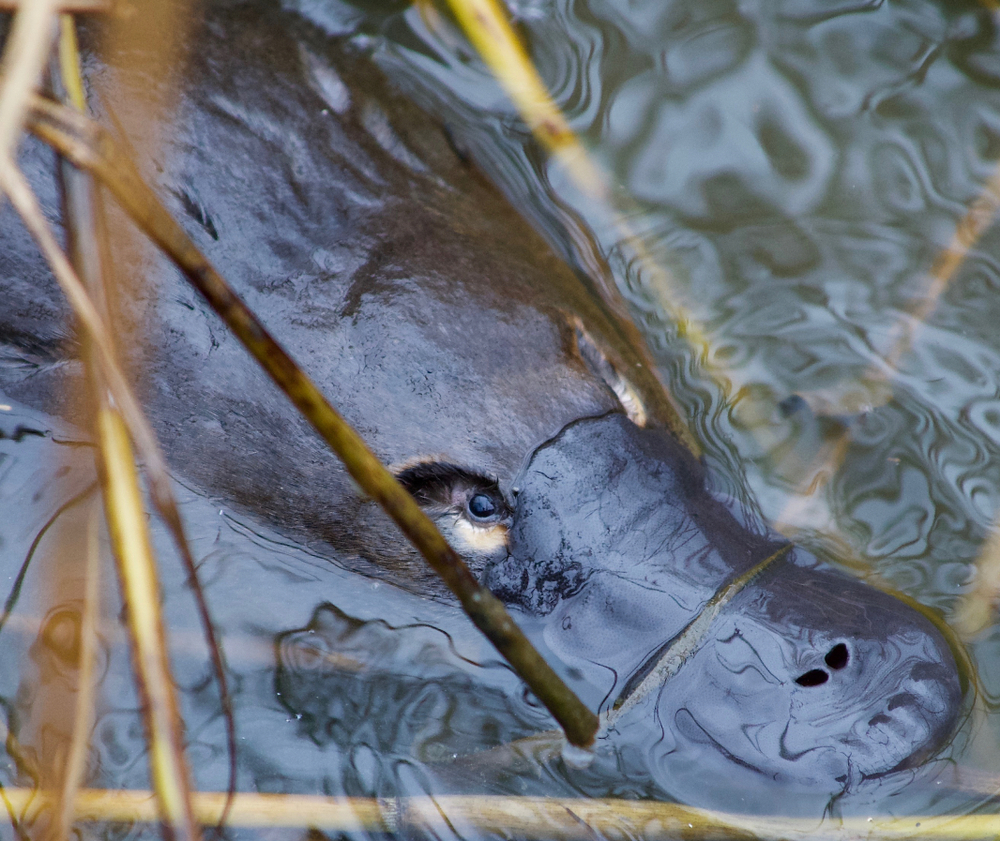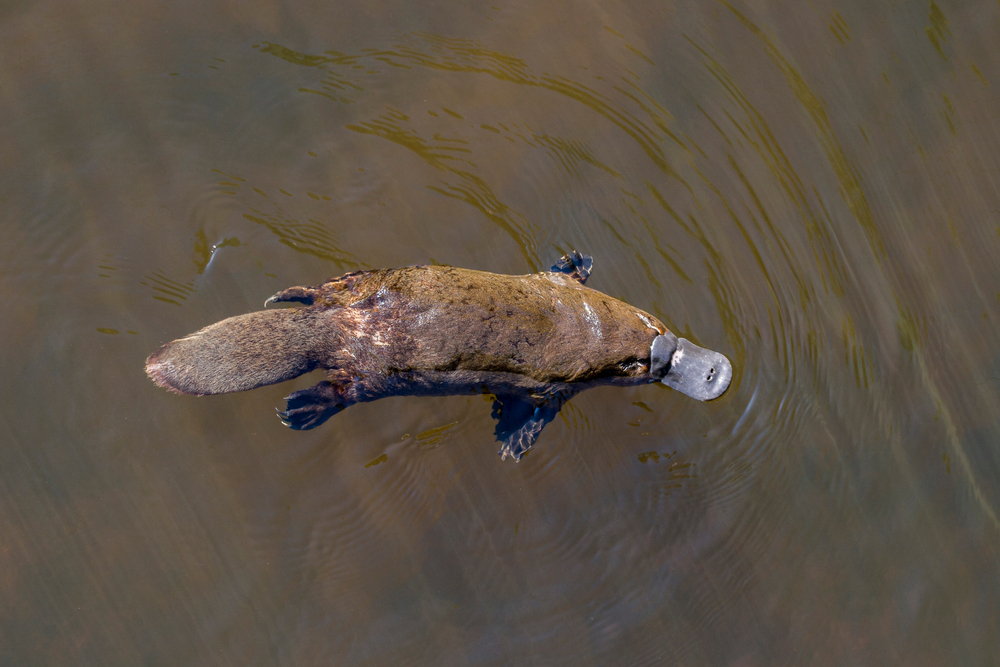Table of Contents (click to expand)
The platypus has defied expectations yet again. It has a sixth sense of detecting electrical signals in water, something we thought only aquatic animals could do, like sharks.
The Platypus. If you start to look into its biology, you’ll find an animal with endless contradictions; an angsty teenager will look ordinary by comparison. They are mammals, who, by definition, give birth to live young. However, the platypus lays eggs. If you look at them, they appear to be a duck, beaver, lizard hybrid created by a mad natural scientist.
They live on land and in water, and they are experts and ill-equipped for both!
Is A Submerged Platypus Like A Fish Out Of Water?
They have feet and a body that seem ideal for water, but, their eyes and ears are adapted to land. If you’ve ever tried to swim with your eyes open, you’ll know that it’s not pleasant, or even possible for some. The same is true for the platypus.
The platypus hunts in the water while effectively blind and deaf.
When platypuses take to the water, they blindfold themselves, but that doesn’t stop them!
Their heads are streamlined, and their ears lack an external pinna (outer lobe of the ear). Instead, each ear is present in a muscled groove. Upon diving, the sides of these grooves will close, rendering their senses of smell, sight, and hearing utterly useless. Their snout remains protruded and mimics a duck’s bill. Only keratinized gum tissue that has been hardened and formed into plates lines it.
Platypuses have no teeth. The animal also has two tiny nostrils on its snout’s edge, which seal tightly underwater.
So, how do they manage to find food with two senses out of commission? Easy… they do what sharks do!
Scientists who looked into the genetics of a platypus found certain genes that were specific to sharks and these creatures, helping them to hunt with their eyes and ears closed.

Also Read: How Do Turtles Eat Underwater Without Swallowing Too Much Water?
The Sixth Sense
A platypus can hold its breath and remain submerged for roughly 120 seconds on average. Since platypuses can’t see underwater, they rely on their snout to act as their “eyes”.
Their flattened bills are one of the most characteristic features of platypuses, and for good reason. The skin covering the bill is somewhat soft and has roughly 40,000 small holes known as electroreceptors and mechanoreceptors. The receptors sense electricity produced by all life forms, which is exactly what sharks do to catch their prey.
Water will push on the sensory cells of the mechano- and electroreceptors in those pores. Each time there is an alteration in the electric fields in the water, which happens when an organism moves, the receptors sense it, become activated, and send the message to the brain via the sensory nerves connected to the receptors.
There are two different types of electroreceptors: one allows the platypus to use a direct current to clear a path, while the other uses alternating current to seize their prey. Sensing the prey’s electrical activity is preceded by a range of mechanical waves. These creatures can pinpoint their target by using the directional information provided by the mechanical waves. The platypus will surface and then resume hunting after gathering all the morsels in its cheeks.

Also Read: How Do Jellyfish Function Without A Heart Or Brain?
The Special Bill
It is interesting to note that the area of the brain that the bill’s receptors trigger is far larger than the region represented by the eyes and ears put together. They can “see” through their bill. The method resembles how primates interpret their more enhanced vision abilities.
The bill of the platypus is unquestionably an important sensory organ. It aids in both their offense and defense. The muscle action of potential prey is sufficient for the platypus to detect their electric fields and charge in the direction of a meal. Scientists examined a platypus bill to learn what it does when its sensory cells are activated. The jaws quickly snapped shut in response.
The bill not only aids the platypus in detecting its nearby prey, but also aids in its capture as soon as the prey makes contact with the animal’s body. It’s extremely possible that if you dropped a small battery into the muddy waters where platypuses live, you would see them come over to check out the potential snack.
Also Read: Can Animals Have A Third Eye?
A Final Word
When visual impairment is possible, whether partial or total, sensing electric fields becomes essential. Because platypuses must keep their eyes closed while swimming, their sixth sense—detecting through their snout—becomes more acute.
But, the platypus’s habitat is being destroyed from repeated land clearing which leads to their fresh water havens dwindling. Without freshwater bodies, they can’t hunt and feed, bringing their weird existence under threat.
How well do you understand the article above!

References (click to expand)
- AU, W. W. L. (1997, January 1). Echolocation In Dolphins With A Dolphin-Bat Comparison. Bioacoustics. Informa UK Limited.
- Map of Life - Convergent Evolution Online - www.mapoflife.org
- Czech-Damal, N. U., Dehnhardt, G., Manger, P., & Hanke, W. (2012, November 28). Passive electroreception in aquatic mammals. Journal of Comparative Physiology A. Springer Science and Business Media LLC.
- Platypus are Electrifying | Office for Science and Society.
- (PDF) The platypus bill. A structural and functional model of ....
- What is a platypus? - NOAA's National Ocean Service.
- Davit-Béal, T., Tucker, A. S., & Sire, J.-Y. (2009, April). Loss of teeth and enamel in tetrapods: fossil record, genetic data and morphological adaptations. Journal of Anatomy. Wiley.
- Bino, G., Kingsford, R. T., Archer, M., Connolly, J. H., Day, J., Dias, K., … Whittington, C. (2019, April 24). The platypus: evolutionary history, biology, and an uncertain future. Journal of Mammalogy. Oxford University Press (OUP).
- Platypus genome explains animal's peculiar features.
